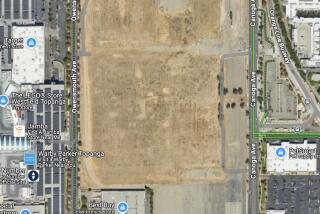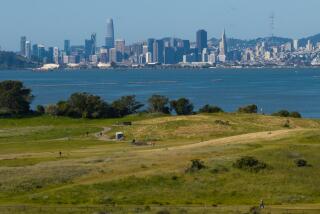EIS Warranted at Rocketdyne
Howâs the cleanup of chemical and radioactive pollution going at Rocketdyneâs Santa Susana Field Lab in the hills between Simi Valley and Chatsworth?
Going fine, says Rocketdyne.
Weâll do an environmental assessment to make sure, says the U.S. Department of Energy.
Do better than that, says Sen. Barbara Boxer. Contamination at the site is so serious it deserves a full environmental impact statement.
Boxer (D-Calif.) sent a letter to Energy Secretary Bill Richardson asking him to prepare a more comprehensive report on Rocketdyneâs effort to clean up the residue of five decades of rocket engine and nuclear reaction testing.
âAs you know, environmental assessments are required to provide only a superficial and cursory environmental review of an agency action,â Boxer wrote in the letter to Richardson. âBy contrast, a thorough EIS would provide a complete review of past cleanup efforts and the development of alternative remedies to mitigate the environmental impact of radioactive and chemical contamination at the site.â
We support the senatorâs request. The peace of mind of residents in the surrounding community deserve a thorough review to confirm that the cleanup efforts are completed satisfactorily and that there is nothing to fear from the site.
The assessment the Energy Department had decided upon would be conducted by a panel of government experts. Boxer maintains that the scale of the cleanup and the severity of the contamination warrant the full EIS, which would include analyses of methodology and standards and would allow for public involvement in the process.
So far, the federal government has paid Rocketdyne nearly $60 million to remove radioactive soil, concrete and building materials from a 300-acre swath at the siteâs western edge. Rocketdyne officials say nearly all of the site has been decontaminated but that another $155 million will be spent to deal with the remaining material.
The Santa Susana lab was an important cornerstone of Americaâs race into space. Rocketdyne designed and tested early rocket engines for nuclear missiles there and went on to produce rocket engines for the nationâs space program. Between the 1950s and 1980s, the company conducted nuclear research under contract for the Department of Energy and the Atomic Energy Commission. In 1956, Rocketdyne began operating a series of test reactors at the site. The research continued through a number of spills and accidents--including a partial fuel meltdown in 1959--until 1989. It now focuses on designing and testing new rocket engines.
Given the nature of its work and the global tensions of the Cold War era in which it operated, it is understandable that secrecy was paramount. But now the only enemy is possible health and environmental hazards that could linger if the cleanup is not completed thoroughly.
Boxer is right that a full environmental impact statement would go further toward guaranteeing this and reassuring the public than the less-rigorous report proposed by the Energy Department. We urge Secretary Richardson to go the extra step.
More to Read
Sign up for Essential California
The most important California stories and recommendations in your inbox every morning.
You may occasionally receive promotional content from the Los Angeles Times.










